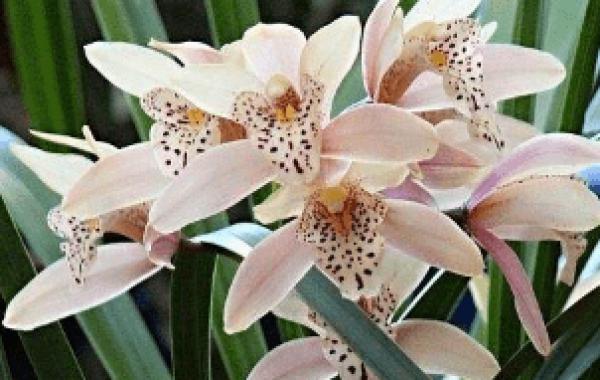How to save the rotten root of the gentleman orchid?
Cymbidium is planted more often, so there will be more problems encountered. Today, I would like to share with you how to save the rotten roots of Cymbidium.
The rotting root of Cymbidium is a disease caused by the disease, which generally occurs in the environment of high temperature and high temperature in summer, showing that the roots below the leaf base rot, the main reasons are:
The main results are as follows: 1. High temperature, high humidity and poor ventilation make the fleshy root of the plant rotten easily.
2. The water is large, the water content of the nutritious soil is large, the air permeability is poor, and the root is soaked in water for a long time, which leads to root discoloration and decay.
3. Hypertrophy, no fermentation of fertilizer in nutritious soil, causing rotting roots caused by heating and burning roots, improper fertilization during the growing period, excessive amount of fertilizer, resulting in fertilizer contact with roots, resulting in root burning, affecting root absorption capacity, root tissue destruction and rotten roots, attention should be paid to the diligent application of thin fertilizer.
4. when the root is injured, when changing the basin or dividing the basin, the root must be completely rotted, then coated with charcoal or fine furnace ash to dry, and then cultivated in the basin to prevent the injured root from coming into direct contact with nutritious soil bacteria.
5, the air permeability is not good, the use of porcelain pots, plastic pots and so on lead to the basin soil air permeability, water permeability is not good and rotten roots.
6. the soil quality is not good, and sexual diseases erode the fleshy roots, resulting in fester.
The above six points are common problems that lead to rotting roots of gentleman orchids. Flower friends should pay attention to prevent rotten roots, and pay attention to water and temperature when maintaining them in peacetime. In summer, they should not be waterlogged or soaked for a long time. Fertilizing should use fermented organic fertilizer, appropriate amount, thin fertilizer applied frequently.
The way to rescue the rotten root is to pour out the plant, remove the rotten root and cut it off, then coat the wound with charcoal powder or fine furnace ash, or rinse the root with potassium permanganate water and put it in the sun for about 10 minutes, using ultraviolet light, if the root has rotted more than half, the rotten root is trimmed and cleaned, after, it can be put into fine sand to urge the root, if only a few roots rot, it can be transplanted into the nutrient soil that has been replaced, and watering can be controlled within half a month. It will recover in a month or two.
If the fleshy roots are all rotten, you can cut off all the rotten roots, wash the roots, apply charcoal powder or fine furnace ash, and put them in a fine sand basin to promote the roots. after two or three months, they can also take root and send leaves again.
In addition, using the rotten leaf soil as the culture soil to rescue the rotten root of the gentleman orchid, the effect is also good, the specific method is to wash the fleshy root with clean water twice, then pinch off the rotten root, spread paper cigarette ash on the wound, dry it for two hours, plant it in a coniferous humus basin, put it in a half-shaded place, timely watering, keep the pot soil moist, and give birth to new roots half a month later.
Related
- Is the orchid suitable for indoor use? Is it good for the body?
- How to prevent the empty root of orchids?
- What to do after the crab claw orchid is withered?
- Why are the leaves of orchids always yellow? Fertilizing and watering.
- Can the root of the gentleman orchid be saved if it is rotten?
- Diagnosis and treatment of cotton-blowing beetle insects in Cymbidium
- There is a way for a gentleman's orchid to rot.
- What is the most suitable temperature and humidity for the orchid?
- How to raise a gentleman's orchid? Cultivation techniques of Cymbidium
- How to prepare the nutritive soil for the cultivation of Cymbidium



